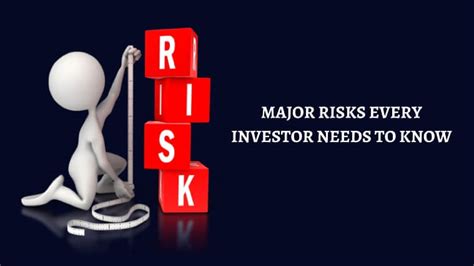Are you tired of feeling blindsided by market fluctuations? Do you yearn to make informed investment decisions that safeguard your financial future? The path to investment success isn’t paved with guesswork; it requires a deep understanding of risk and its intricate dance with potential reward.
But fear not! Knowledge is power, and within this article, you’ll uncover seven crucial risk adjustments that will empower you to navigate the investment landscape with confidence. From diversifying your portfolio to meticulously assessing your risk tolerance, these insights will equip you to weather market storms and capitalize on opportunities.
Get ready to transform your investment journey from one of uncertainty to a well-calculated path towards financial prosperity.
7 Risk Adjustments Every Investor Needs to Know

Investing is a journey, not a sprint. It’s about carefully navigating the often-turbulent market seas to reach your financial shores. While the allure of high returns is undeniable, it’s crucial to remember that with greater potential for profit comes greater potential for loss. That’s where risk adjustments come in – your trusty compass and navigation system for staying on course.
These adjustments help you understand and manage the inherent risks associated with different investments, ensuring you don’t get swept away by unforeseen currents. Let’s dive into 7 essential risk adjustments every investor should master:
1. Time Horizon

This is your roadmap, outlining when you need to access your invested funds.
- Short-Term Investing (Less than 5 years):
Think of this as navigating a calm, predictable lake. You prioritize capital preservation, seeking investments that offer stability and relatively low volatility, even if the returns are modest.
- Mid-Term Investing (5-10 years):
Here, you’re venturing into slightly choppier waters, allowing for more moderate risk-taking in pursuit of balanced growth.
- Long-Term Investing (10+ years): This is where the open ocean beckons, and you can embrace higher risk for potentially greater rewards, riding out market fluctuations and aiming for long-term capital appreciation.
2. Risk Tolerance

This is your personal barometer, measuring how comfortable you are with potential losses. It’s influenced by factors like age, financial situation, and emotional outlook.
-
Conservative Investors: You prefer steady, predictable returns, even if they’re lower. You’d steer clear of risky assets like individual stocks, opting for safer havens like bonds or investment-grade funds.
-
Moderate Investors: You’re willing to take some risk for potentially higher returns, balancing growth with capital preservation.
-
Aggressive Investors: You have a high appetite for risk, chasing substantial returns even if it means accepting greater volatility. Focus might be on fast-growing stocks or emerging markets.
3. Diversification

Don’t put all your eggs in one basket! Diversification spreads your risk across multiple asset classes, reducing the impact of any single investment performing poorly.
- Asset Class Diversification:
Consider a mix of stocks, bonds, real estate, commodities, and cash.
- Geographic Diversification: Invest across different countries and regions to minimize exposure to specific economic downturns.
- Sector Diversification: Spread investments among diverse sectors (technology, healthcare, energy) to avoid concentration risk.
4. Inflation Risk

Inflation’s silent thief, eroding the purchasing power of your money over time.
- Invest in Inflation-Hedging Assets:
Consider commodities (gold, oil), real estate, and stocks with strong pricing power to keep pace with inflation.
- Regularly Review and Adjust:
Monitor inflation rates and make necessary adjustments to your portfolio to maintain its real value.
5. Interest Rate Risk

When interest rates rise, bond prices generally fall.
- Bond Maturity: Shorter-term bonds are less sensitive to interest rate fluctuations.
- Quality: High-quality bonds (government bonds) are generally less vulnerable to interest rate risk.
6. Liquidity Risk

Your ability to quickly buy or sell an asset without significantly impacting its price.
- Cash and Cash Equivalents:
Highly liquid investments with minimal risk.
- Publicly Traded Stocks and Bonds:
Typically offer good liquidity.
- Private Equity and Real Estate:
Less liquid investments that can be harder to sell quickly.
7. Market Risk

The unpredictable nature of the market, influenced by a multitude of factors.
- Systematic Risk:
Market-wide risks (economic downturns, geopolitical events) that affect all investments.
- Unsystematic Risk:
Specific to individual companies or sectors (management changes, industry competition). Diversification helps mitigate this risk.
Navigate Your Investment Journey with Confidence

Understanding and applying these risk adjustments isn’t about eliminating risk entirely – it’s about managing it effectively. By carefully considering your time horizon, risk tolerance, and diversifying your portfolio, you can navigate the investment landscape with greater confidence, steering your financial ship towards a successful destination.
FAQ
Q: What are risk adjustments?
A: Risk adjustments are factors investors incorporate into their calculations to account for the potential downsides of investing, aiming to compensate for taking on more risk.
Q: Why are risk adjustments important?
A: Risk adjustments ensure investments are fairly valued, recognizing that higher potential returns usually come with higher risk.
Q: Are all risk adjustments created equal?
A: No, different risk adjustments apply to different types of investments and market conditions.
Q: Which risk adjustments are covered in this article?
A: The article focuses on 7 key risk adjustments: Market Risk, Interest Rate Risk, Inflation Risk, Liquidity Risk, Credit Risk, Currency Risk, and Operational Risk.
Q: How can I apply risk adjustments to my own investments?
A: The article provides insights and strategies for understanding each risk adjustment and incorporating them into your investment decision-making.
Q: Is understanding risk adjustments enough to guarantee investment success?
A: While crucial, risk adjustments are just one piece of the puzzle. Successful investing also requires thorough research, diversification, and a long-term perspective.




